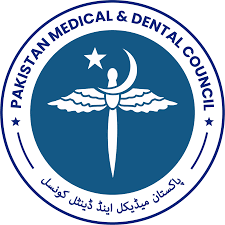Pattern of Injuries in Bomb Blast at Police Lanes and its Association with Different Demographic Factors
DOI:
https://doi.org/10.52442/jrcd.v5i2.102Abstract
Background: Bomb blast injuries are a significant cause of morbidity and mortality, particularly in conflict zones. In low- and middle-income countries, such injuries are increasingly common, with devastating consequences for the affected population. In Pakistan, bomb blast incidents have been on the rise, leading to substantial loss of life and health care burden. Understanding the pattern of injuries in these events and their association with demographic factors is crucial for improving response strategies and healthcare interventions.
Objectives: This study aimed to investigate the pattern of injuries in victims of a bomb blast at Police Lines in Peshawar, Pakistan, and analyze the demographic factors associated with these injuries.
Methods: A cross-sectional study was conducted on 85 victims who died in a bomb blast, with autopsies performed at the forensic medicine department of Khyber Medical College, Peshawar. Data on injury types, body regions affected, and demographic characteristics (age, gender) were collected and analyzed.
Results: The study revealed that 98.8% of the victims were male, with a mean age of 40.9 years. The most common injuries included lacerations (71.7%), fractures (62.4%), and bruises (45.9%). Victims commonly sustained injuries to the brain (62.4%), heart (55.3%), and lungs (56.5%). The majority of deaths (88.2%) occurred immediately after the blast, with a postmortem interval mostly between 3-6 hours (37.6%). There was a predominance of male victims, and most injuries were multi-system, involving both the head and thoracic regions.
Conclusions: This study highlights the devastating impact of bomb blasts, particularly on males in the working-age group. The injury patterns observed—especially the prevalence of severe brain and chest injuries—underscore the lethal nature of such blasts. Immediate deaths were predominantly due to multisystem trauma. The findings suggest a need for improved emergency medical responses, enhanced forensic analysis, and preventive strategies to mitigate the toll of bomb blast incidents in conflict areas.
Keywords: Bomb blast, injuries, demographic factors, Peshawar, autopsy, trauma, forensic medicine, Pakistan, multisystem injuries, civilian casualties.




